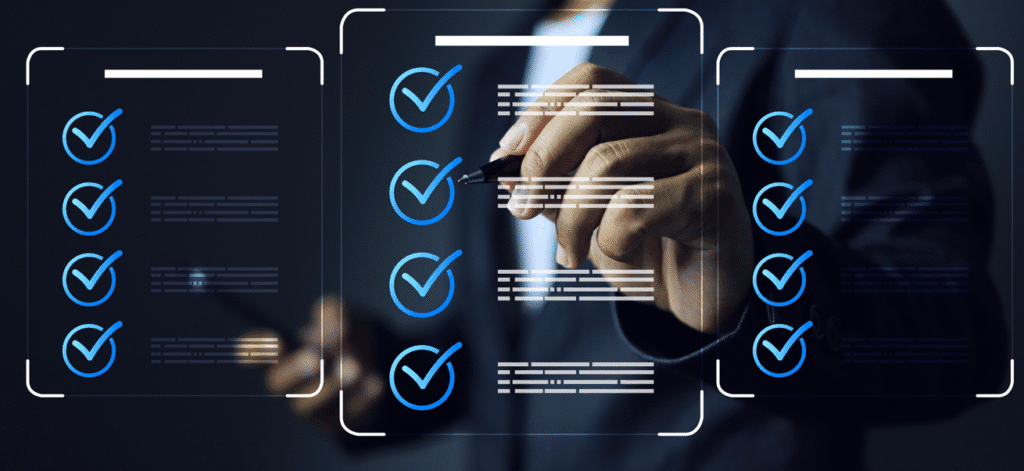Today, small businesses rely on third-party vendors for everything from cloud storage to payment processing. While these partnerships may improve efficiency and enhance growth, they also introduce significant cybersecurity risks. A single vulnerable vendor can expose an entire business to data breaches, regulatory fines, and reputational damage.
Vendor Risk Management (VRM) is critical because it helps companies assess, monitor, and mitigate cybersecurity threats from external partners.
This blog outlines why vendor risk management is critical, how small businesses can assess their vendors, and best practices for reducing third-party cyber threats.
Why Vendor Risk Management is Essential for Small Businesses
Many small businesses believe cybercriminals only target large corporations, but attackers often see small companies as easier prey, less protected targets.
Cyber threats introduced by third-party vendors can lead to:
- Data Breaches: If a vendor’s security is compromised, sensitive customer or business data could be exposed.
- Regulatory Non-Compliance: Businesses handling customer data must adhere to industry regulations (e.g., PCI-DSS, HIPAA, GDPR). Non-compliant vendors can put businesses at risk of fines.
- Financial & Reputational Damage: A breach caused by a vendor can diminish customer trust and lead to costly financial losses.
Small businesses must evaluate, monitor, and manage vendor security effectively to minimize these risks.
How to Assess and Manage Vendor Cybersecurity Risks
A strong vendor risk management strategy involves careful selection, continuous monitoring, and proactive security controls. Here’s how small businesses can establish a VRM framework that safeguards their operations:
1. Identify and Categorize Vendors by Risk Level
Vendors vary in risk level. Businesses should classify them by assessing their level of access to private or sensitive data, the effectiveness of their security protocols and potential impact of a security breach.
- High-Risk Vendors: Cloud storage providers, HR platforms, payment processors, and third-party IT service providers with access to customer or business data.
- Moderate-Risk Vendors: Marketing agencies, and software providers that interact with some sensitive information.
- Low-Risk Vendors: Office supply vendors and other service providers that do not handle business-critical data.
By prioritizing high-risk vendors, small businesses can focus resources where they are needed most.
2. Conduct a Vendor Cybersecurity Assessment
Before engaging with a new vendor, businesses should evaluate their security posture by requesting the following:
- Security Certifications (ISO 27001, SOC 2, PCI-DSS) to ensure compliance with industry standards.
- Cybersecurity Policies outline how they protect client data and respond to threats.
- Incident Response Plan to verify how the vendor handles breaches and notifies affected parties.
- Access Controls to confirm who within the vendor’s organization can access sensitive information.
A vendor’s lack of clear cybersecurity policies may be a red flag.
3. Establish Strong Contracts and Security Agreements
A contract should outline security expectations and include:
- Data Protection Requirements: Vendors must follow best practices to safeguard information.
- Breach Notification Policies: A vendor should be required to report breaches immediately.
- Regular Security Assessments: Businesses should be able to conduct audits or request security reviews.
These agreements hold vendors accountable and help mitigate legal risks.
4. Implement Continuous Vendor Monitoring
Security risks evolve, and vendor security should be continuously assessed and improved.
- Regular Security Assessments: Conduct annual or bi-annual reviews of vendors’ cybersecurity practices.
- Automated Security Tools: Consider using security monitoring services that provide real-time alerts on vendor vulnerabilities.
- Vendor Compliance Check-Ins: Maintain ongoing communication with vendors about security updates, patches, and policy changes.
Monitoring vendors beyond the initial assessment reduces long-term exposure to cyber risks.
5. Train Employees on Vendor Cybersecurity Risks
Employees often interact with third-party systems, making cybersecurity awareness critical.
- Teach employees how to recognize suspicious vendor activity.
- Implement strong access controls to limit employee interactions with vendor systems.
- Ensure employees verify vendor communications to prevent phishing scams or fraudulent requests.
A well-trained team is an additional layer of defence against third-party cyber threats.
6. Have a Vendor Incident Response Plan
Even with strong vendor security controls, breaches can still happen. Businesses need a clear incident response strategy that includes:
- Immediate Containment: Quickly disconnect compromised vendor systems from company networks.
- Investigation & Notification: Determine the scope of the breach and notify affected parties.
- Regulatory Compliance Steps: If required by law, report breaches to regulatory bodies.
- Post-Breach Audit: Assess what went wrong and strengthen security measures.
A proactive response plan can reduce downtime, limit damage, and maintain customer trust.
Small Businesses Can’t Afford Not to Prioritize Vendor Risk Management
Third-party vendors play a valuable role in business operations but also introduce cybersecurity risks. Small businesses can minimize threats, maintain compliance, and protect sensitive data by carefully assessing vendors before securing partnerships, implementing robust vendor contracts and security agreements, committing to continuously monitoring security practices and performing other forms of security due diligence. Small businesses cannot afford to overlook third-party security risks. A vendor, after all, is an extension of your business operations.
References
6 Tips for Managing Vendor Cybersecurity Risk. Venminder. 11 October, 2022, www.venminder.com/blog/6-tips-for-managing-vendor-cyber-risk?.
Cloudanix. Vendor Risk Management for Small Businesses: A Practical Guide. LinkedIn. 24 Aug. 2024, https://www.linkedin.com/pulse/vendor-risk-management-small-businesses-practical-guide-cloudanix-jm7yf/
Olcott, Jake. “What Is Vendor Risk Management (VRM)?” Bitsight, 26 Sept. 2024, http://www.bitsight.com/blog/vendor-risk-management-definition.
Need more info?
Take the next step—contact us today for a free cybersecurity strategy session and ensure your business is fully protected!
Our Cyntry experts can identify strategies to safeguard your data and systems. At Cyntry, simplifying the compliance journey and strengthening your security posture is what we do best.
Book a no-cost 30-minute compliance and cybersecurity strategy session at Cyntry.com.



